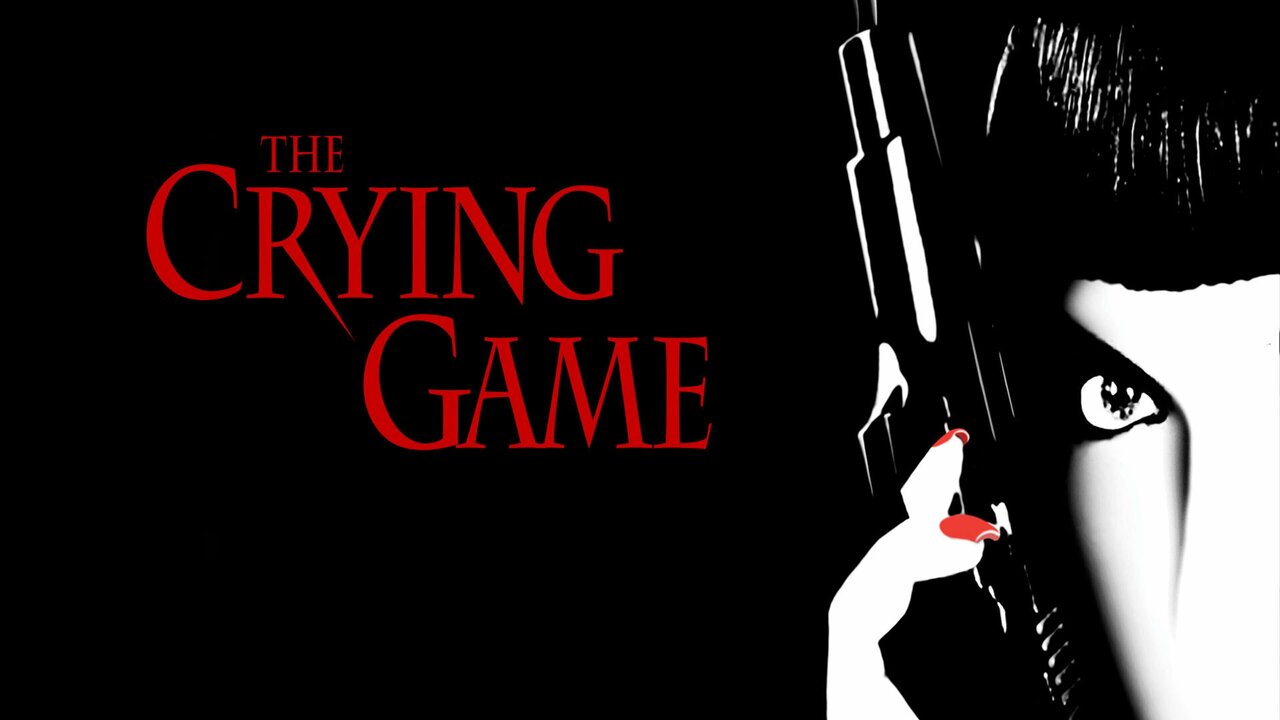
The Crying Game is a critically acclaimed film that left audiences captivated and emotionally moved when it hit the screens in 1992. Directed by Neil Jordan, this psychological thriller became an instant classic and has since garnered a cult following. Set against the backdrop of the Irish Troubles, the movie takes viewers on a rollercoaster ride of emotions, exploring themes of love, identity, loyalty, and betrayal.
With its gripping plot, unforgettable characters, and thought-provoking twists, The Crying Game has solidified its place in cinematic history. In this article, we will delve into the fascinating world of The Crying Game and reveal 47 intriguing facts that you may not know about this iconic film.
Key Takeaways:
- The Crying Game is a thought-provoking movie that explores complex themes of identity, love, and political conflict, challenging traditional storytelling and inspiring important conversations about gender and sexuality.
- With its shocking plot twist, powerful performances, and enduring impact on pop culture, The Crying Game stands as a cinematic masterpiece that continues to captivate and resonate with audiences of all generations.
The Crying Game was released in 1992.
Directed by Neil Jordan, this thought-provoking drama captivated audiences upon its release.
The movie explores themes of identity and gender.
One of the remarkable aspects of The Crying Game is its exploration of complex themes surrounding identity and gender stereotypes.
It features a suspenseful plot twist.
The Crying Game is well-known for its shocking plot twist that surprised and intrigued audiences around the world.
The film delves into the Irish Troubles.
The backdrop of the Irish Republican Army (IRA) and the ongoing conflicts in Northern Ireland adds depth and political context to the story.
Stephen Rea delivers a standout performance as Fergus.
Rea’s portrayal of the conflicted IRA member brings a depth of emotion and complexity to the character.
Dil, played by actress Jaye Davidson, became an iconic character.
Dil’s character challenges societal norms and biases, making her a memorable figure in cinema history.
Neil Jordan won an Academy Award for Best Original Screenplay.
Jordan’s exceptional screenplay was recognized and awarded for its thought-provoking and intricate storytelling.
The Crying Game was also nominated for Best Picture.
The film’s compelling narrative and powerful performances earned it a place among the Best Picture nominees.
The soundtrack features the haunting song “The Crying Game” by Boy George.
Boy George’s iconic song adds an emotional tone to the film and became synonymous with its title.
The Crying Game received critical acclaim.
Many critics praised the film’s compelling story, strong performances, and its exploration of complex themes.
The movie is known for its unique perspective on love and sexuality.
The Crying Game challenges conventional notions of love and emphasizes the importance of empathy and acceptance.
It became a cultural phenomenon in the early 1990s.
The film’s impactful storytelling and memorable characters contributed to its widespread popularity and cultural significance.
The Crying Game won numerous awards and accolades.
It received recognition at various film festivals and award ceremonies, solidifying its place in cinematic history.
It sparked discussions around gender and sexuality.
The thought-provoking themes of the film ignited important conversations about gender identity and sexual orientation.
The Crying Game showcases the complexities of relationships.
The film explores the intricate dynamics between its characters, highlighting the struggles and complexities of human connection.
Forest Whitaker delivers a powerful performance as Jody.
Whitaker’s portrayal of Jody, a British soldier, leaves a lasting impact and adds depth to the film.
The movie features stunning cinematography.
The visually captivating shots enhance the storytelling and create a vivid atmosphere for the audience.
The Crying Game is considered a landmark film for LGBTQ+ representation.
The film’s nuanced portrayal of LGBTQ+ characters challenged stereotypes and paved the way for more inclusive storytelling.
It explores the consequences of choices and actions.
The Crying Game delves into the repercussions of decisions made by its characters, showcasing the impact of their choices.
The film’s ending leaves room for interpretation.
The ambiguous ending invites viewers to ponder the deeper meanings of the story and its themes.
The Crying Game has a loyal and passionate fan base.
Over the years, the film has amassed a dedicated following that appreciates its unique narrative and thought-provoking content.
It continues to be studied in film schools.
The Crying Game’s impact on cinema has led to its inclusion in academic curricula, where its storytelling techniques are analyzed and discussed.
The movie explores the complexities of political conflicts.
Through its portrayal of the IRA and the Troubles, The Crying Game delves into the intricate nature of political struggles.
It highlights the power of human connection.
The film emphasizes the importance of empathy and understanding in forging meaningful relationships.
The Crying Game tackles themes of betrayal and loyalty.
The characters’ actions and decisions throughout the film bring forth the delicate balance between trust and betrayal.
It challenges societal norms and expectations.
The Crying Game pushes boundaries and questions conventional ideas of gender, love, and relationships.
The movie’s screenplay is hailed for its complexity and intricacy.
Neil Jordan’s writing skillfully weaves together multiple storylines and thematic elements, creating a rich and layered narrative.
The Crying Game features memorable dialogues.
The script is filled with powerful and thought-provoking lines that have become iconic in cinematic history.
It showcases the struggles of self-discovery.
The characters in The Crying Game undergo personal journeys of self-realization and self-acceptance.
The film’s editing enhances its storytelling.
The seamless transitions and well-crafted editing choices contribute to the overall impact of the narrative.
The Crying Game evokes a range of emotions in its viewers.
From suspense to heartache, the film takes audiences on an emotional rollercoaster throughout its runtime.
It defies genre conventions.
The Crying Game blends elements of drama, romance, and political thriller, creating a unique cinematic experience.
The movie’s performances are praised for their depth and authenticity.
The talented cast brings the characters to life with their nuanced portrayals, adding layers of authenticity to the story.
The Crying Game explores the consequences of secrecy and deception.
The film showcases the impact that hidden truths and lies can have on relationships and individuals.
The movie’s success opened doors for independent filmmakers.
The Crying Game’s recognition and popularity paved the way for more diverse and unique voices in the world of independent cinema.
It challenges viewers to question their own prejudices and biases.
The Crying Game prompts introspection and encourages audiences to examine their own preconceived notions about gender and identity.
The film’s costume design adds depth to the characters.
The carefully crafted costumes help convey the personalities and struggles of the film’s protagonists.
The Crying Game’s impact on pop culture is enduring.
References to the film can still be found in various forms of media, showing its lasting influence and relevance.
It features a memorable and haunting musical score.
The film’s score, composed by Anne Dudley, adds an extra layer of emotion and atmosphere to the story.
The Crying Game raises ethical and moral questions.
The film presents situations that challenge viewers to contemplate their own values and judgments.
It was met with controversy upon release.
The film’s unconventional themes and plot twist sparked debates and discussions among audiences and critics.
The Crying Game showcases the complexities of human nature.
Through its exploration of love, loyalty, and deception, the film delves into the intricacies of what it means to be human.
The movie’s non-linear narrative adds suspense and intrigue.
The storytelling structure keeps the audience engaged as it unravels the layers of the characters’ lives.
The Crying Game is an example of powerful storytelling.
The film’s ability to captivate and touch audiences is a testament to its exceptional storytelling techniques.
It challenges traditional narratives and expectations in filmmaking.
The Crying Game breaks free from conventional storytelling norms, offering a fresh and innovative approach to cinema.
The movie’s themes and messages remain relevant today.
The exploration of identity, love, and acceptance in The Crying Game continues to resonate with audiences of all generations.
The Crying Game is a cinematic masterpiece.
Through its impeccable writing, outstanding performances, and thought-provoking themes, the film takes its place among the greats of cinema history.
Conclusion
The Crying Game is a ground-breaking movie that captivated audiences with its unique story and powerful performances. With its complex characters and thought-provoking themes, it remains a timeless classic in the world of cinema. From its unexpected twists to its exploration of gender and identity, The Crying Game continues to be a film that sparks discussions and leaves a lasting impression. Whether you’re a fan of gripping dramas or interested in exploring the complexities of the human experience, The Crying Game is a must-watch movie that will stay with you long after the credits roll.
FAQs
1. What is the plot of The Crying Game?
The Crying Game follows the story of an IRA member who forms an unexpected bond with the girlfriend of a British soldier he has kidnapped. As their relationship develops, the film explores themes of love, loyalty, and betrayal.
2. Who are the main actors in The Crying Game?
The film features a talented cast including Stephen Rea, Miranda Richardson, Jaye Davidson, and Forest Whitaker.
3. Is The Crying Game based on a true story?
No, The Crying Game is not based on a true story. However, it does tackle real-life issues such as political conflict and personal identity.
4. What sets The Crying Game apart from other movies?
The Crying Game stands out for its unconventional narrative and the unexpected twists and turns it takes. It defies genre conventions and offers a unique exploration of complex human emotions.
5. How did The Crying Game impact the film industry?
The Crying Game received critical acclaim and made waves in the film industry for its bold storytelling and controversial subject matter. It challenged traditional notions of gender and identity, paving the way for more diverse and inclusive narratives in cinema.
Was this page helpful?
Our commitment to delivering trustworthy and engaging content is at the heart of what we do. Each fact on our site is contributed by real users like you, bringing a wealth of diverse insights and information. To ensure the highest standards of accuracy and reliability, our dedicated editors meticulously review each submission. This process guarantees that the facts we share are not only fascinating but also credible. Trust in our commitment to quality and authenticity as you explore and learn with us.


